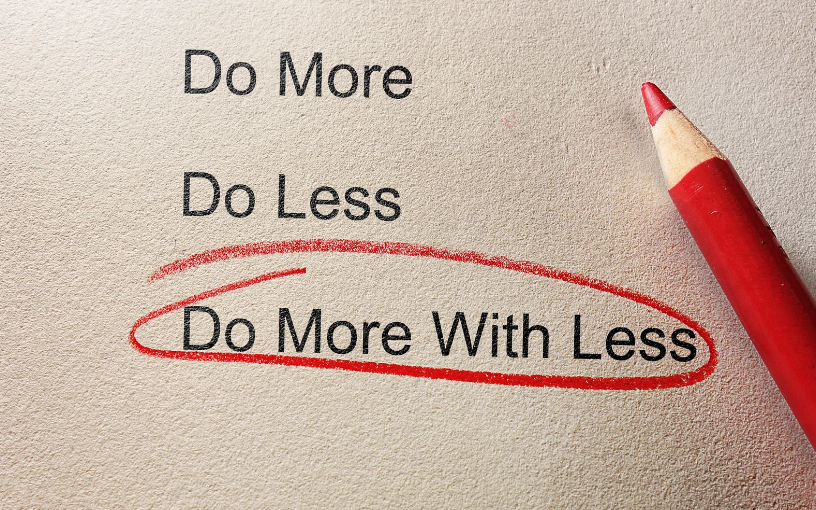In organizations focused on growth, there’s often an assumption that adding more—more tools, more meetings, more initiatives—means better results. But in reality, operational load tends to grow faster than operational value. Especially in niche-focused or multi-brand environments, too much activity can become a drag on clarity, energy, and results.
Reducing operational load isn’t about pulling back for the sake of it. It’s about identifying what’s worth doing and protecting the space around it. Leaders who approach simplification deliberately often find that their teams produce better results, make faster decisions, and avoid unnecessary rework.
Overload Is A Structural Problem, Not A Work Ethic Issue
Many teams assume they’re falling behind because they’re not doing enough. But the real issue is often the opposite: they’re doing too much with too little strategic filtering. This leads to busy teams, not productive ones. Layer by layer, tasks accumulate: status meetings, duplicated reporting, approval bottlenecks, unused tools, and redundant vendor oversight.
At scale, these small inefficiencies create structural drag. It becomes harder to know what matters, where decisions are made, and what work is actually moving the business forward. As systems become more complex, even well-intentioned efforts can get lost in execution. People begin working harder without realizing they’re solving the same problem in three places at once.
A Simpler Structure Creates Room For Better Decisions
Reducing load starts with revisiting what you’ve already committed to. What meetings consistently produce clarity? Which reports lead to action? Which recurring efforts haven’t been questioned in 12 months?
Look for signs of unnecessary friction:
- Are people attending meetings without understanding why?
- Are project scopes expanding mid-flight due to unclear boundaries?
- Are tools being used because they’re needed—or because they were inherited?
Streamlining isn’t just about efficiency—it’s about creating conditions for more confident decision-making. When teams have fewer priorities and clearer lines of ownership, they can focus more energy on execution.
Simplifying structure doesn’t mean creating a rigid process. It means choosing clarity over volume. It means assigning work based on actual outcomes rather than assumptions. And it often means reducing the number of people involved in each decision so that responsibility can be clear and measurable.
Focus Protects Energy And Reduces Risk
Marketing teams often experience risk not through failure—but through fatigue. When capacity is stretched across too many low-impact efforts, judgment erodes. Decision fatigue sets in. Creative quality declines. Delays compound, and the space to plan or think deeply disappears.
Focusing on fewer, more meaningful efforts helps preserve internal energy and external trust. It creates room for teams to test, adjust, and improve without feeling overwhelmed. It also reduces the chance of systemic errors—missed timelines, disconnected messaging, or fragmented experiences.
In other words, doing less can help protect what matters most: attention, brand consistency, and operational reliability. These are often the very things that drive long-term momentum.
A Framework for Reducing Load
- Inventory all recurring efforts. Identify everything your team does on a monthly or quarterly basis—reports, meetings, campaigns, reviews. Be honest about how much time each takes and whether its original purpose still applies.
- Assess value and ownership. For each effort, ask: Who owns it? What decision is it meant to support? Has that decision happened recently? Is this work still creating forward motion or is it being done out of habit?
- Remove or reframe. Eliminate low-value efforts. Replace broad check-ins with project-specific workflows. Stop reporting on metrics that don’t influence any current choices. Make sure each remaining effort has a clear point of accountability.
- Consolidate tools and processes. Look for functional overlap in platforms or teams. Merging responsibilities can create flow and reduce delays. If five systems do the work of two, pick the ones that move cleanly and consistently.
- Create thresholds for new efforts. Don’t add a new report, meeting, or initiative without a clear owner, outcome, and time limit. Build checkpoints to revalidate new layers after 30, 60, or 90 days.
This framework is not about making teams do less—it’s about giving them room to work on what matters. It’s about ensuring the time they spend has meaning, structure, and momentum behind it.
Less Noise, More Focused Progress
Many organizations equate volume with progress. But over time, what protects progress is focus. The businesses that move forward consistently are not the ones doing the most—they’re the ones doing what fits their structure, capacity, and direction.
Reducing operational load is a form of stewardship. It helps preserve the people, time, and trust that growth depends on. When that trust is protected internally, it shows up externally as consistency and presence.
In environments where clarity is a strategic advantage, the ability to simplify is often the skill that sustains momentum. Leadership teams that respect the limits of time, focus, and energy are more likely to make decisions that lead to meaningful, measurable outcomes.
Doing less, with intent, often protects more of what keeps the organization healthy.




